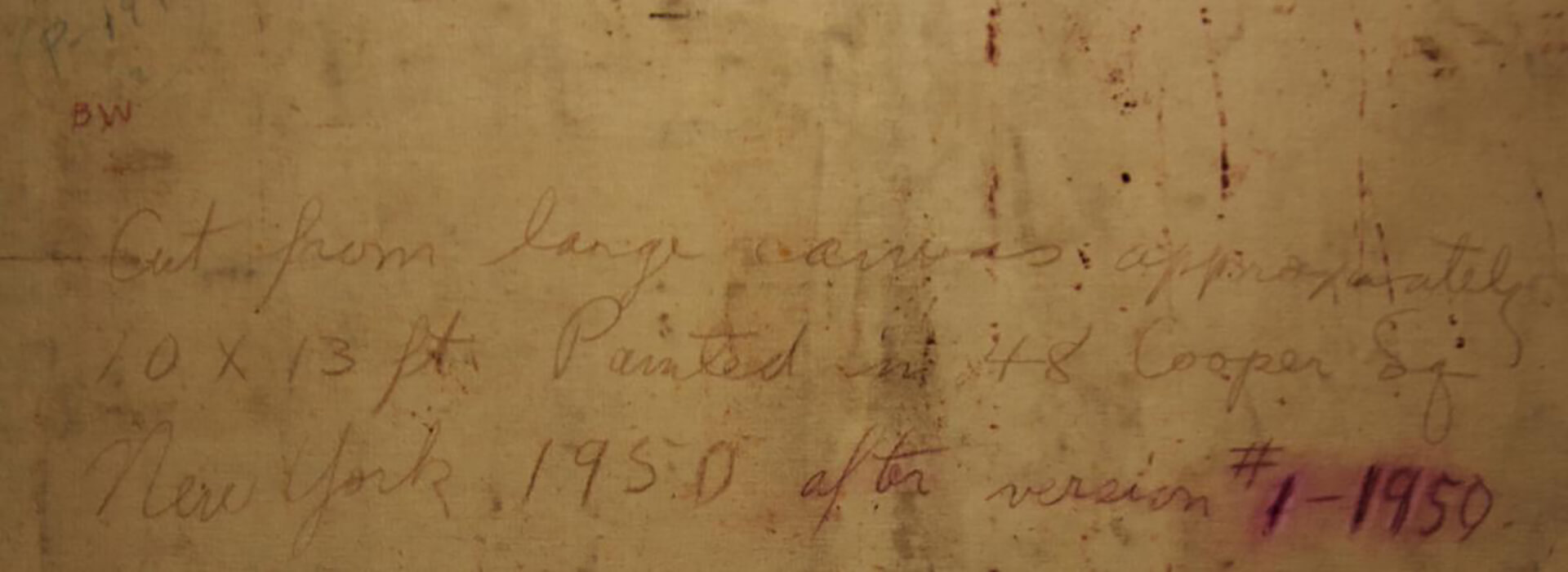By Emily Kosakowski, registrar
People are fascinated by things they cannot see. The lucky few who get to visit the “behind-the-scenes” areas of museums love to experience what other visitors do not – a glimpse at works of art in storage or a peek at the work that the Conservator is doing. Fortunately for Clyfford Still Museum visitors, our visible storage areas and windows into the Research Center, Archives Room, and Conservation Lab offer such experiences for everyone.
Similarly, it is appealing to explore what can be found “hidden” on the verso (the back or flip-side) of works of art. There is often much information that can reveal a work’s history: when it was painted, who owned it, who bought and sold it, and where it was exhibited. In the case of Clyfford Still’s works, most of which were never bought or sold and not often exhibited, we gain clues from the artist himself.
During our inventory of the collection, we have discovered many examples of instructive inscriptions and even other images. The verso of PH-191 has an inscription that reads, “Cut from large canvas approximately 10 x 13 ft. Painted in 48 Cooper Square, New York after version #1-1950”. We now know that it was altered from its original format, that it was painted in Still’s studio in New York, and that it followed another version illustrating a similar idea.
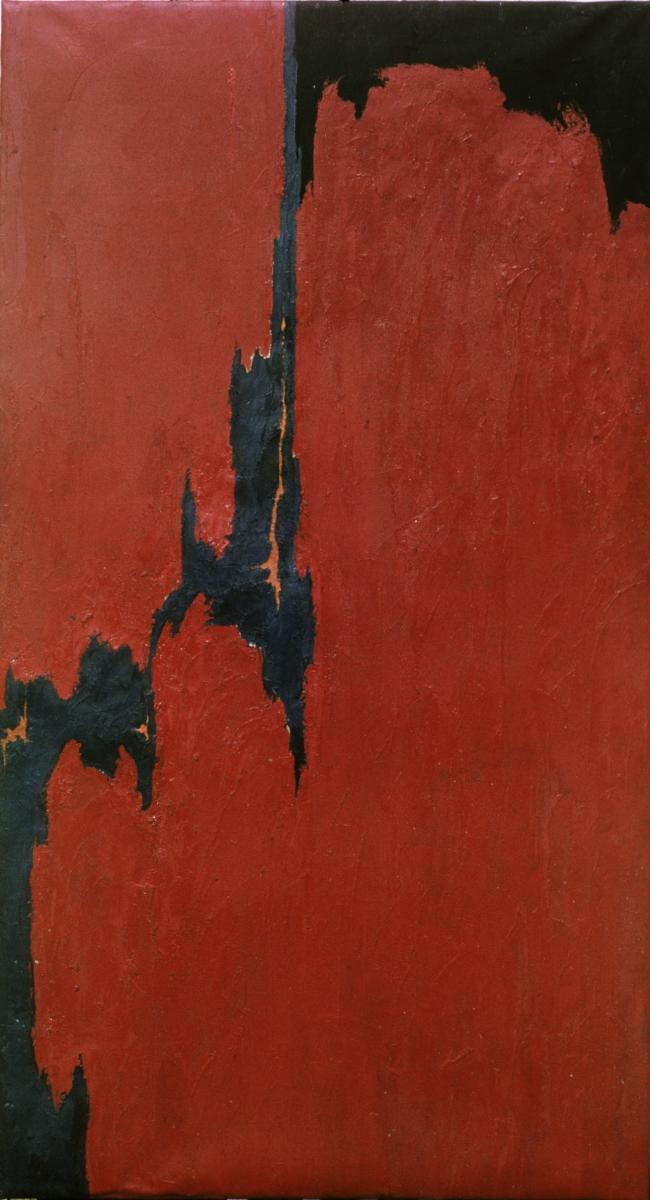

Clyfford Still, PH-191, 1951, oil on canvas (top) and its verso.
The verso of PH-656 has an inscription that reads “Oil on paper painted 1928 in Killam, Alberta 14 3/4″ x 17 3/4″, PH-656 BW, sowing wheat on windy and stormy day”. In this case we now know that it was painted when Still lived in Canada. It is also a rare example of a description provided by Still. However, the description still stops short of an actual title.
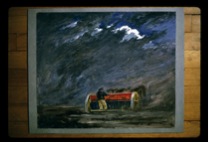
Clyfford Still, PH-656, 1928, oil on paper.
When cataloging PD-3, PD-56, and PDX-15, we found additional imagery on the verso. There are many examples of this in his early drawings where Still appears to use both sides of his paper to sketch and work out ideas about color, composition, and other ideas.
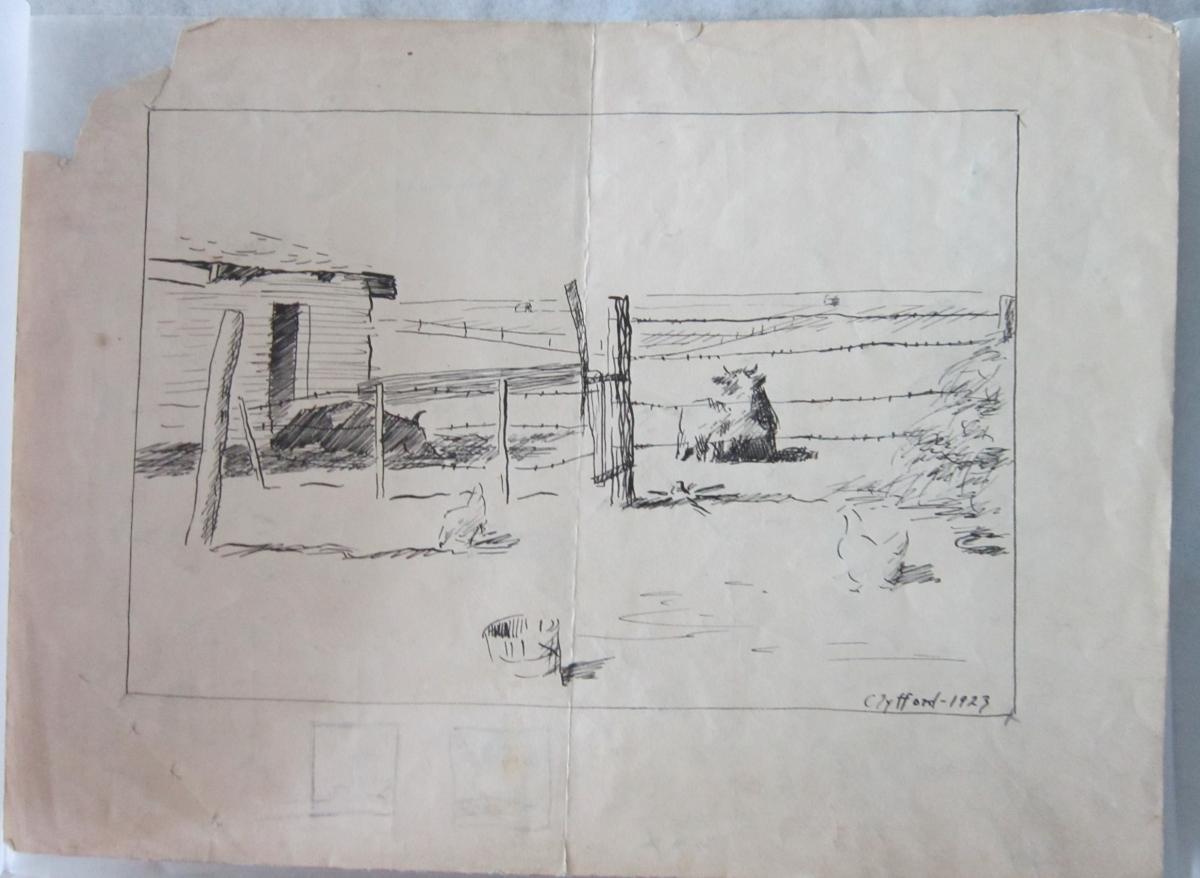

Clyfford Still, PD-3, 1923, ink, graphite and watercolor on paper (top) and verso (above).
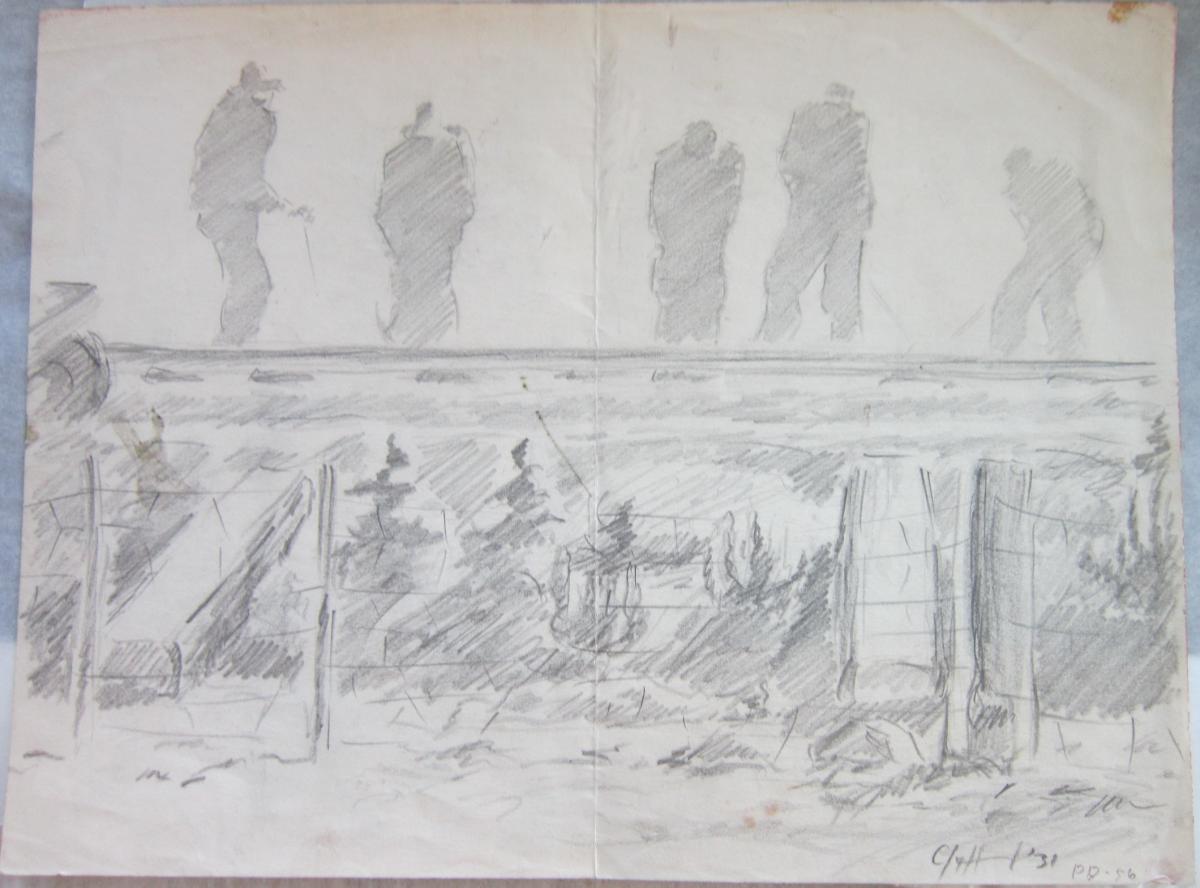

Clyfford Still, PD-56, 1931, graphite and crayon on paper (top) and verso (above).
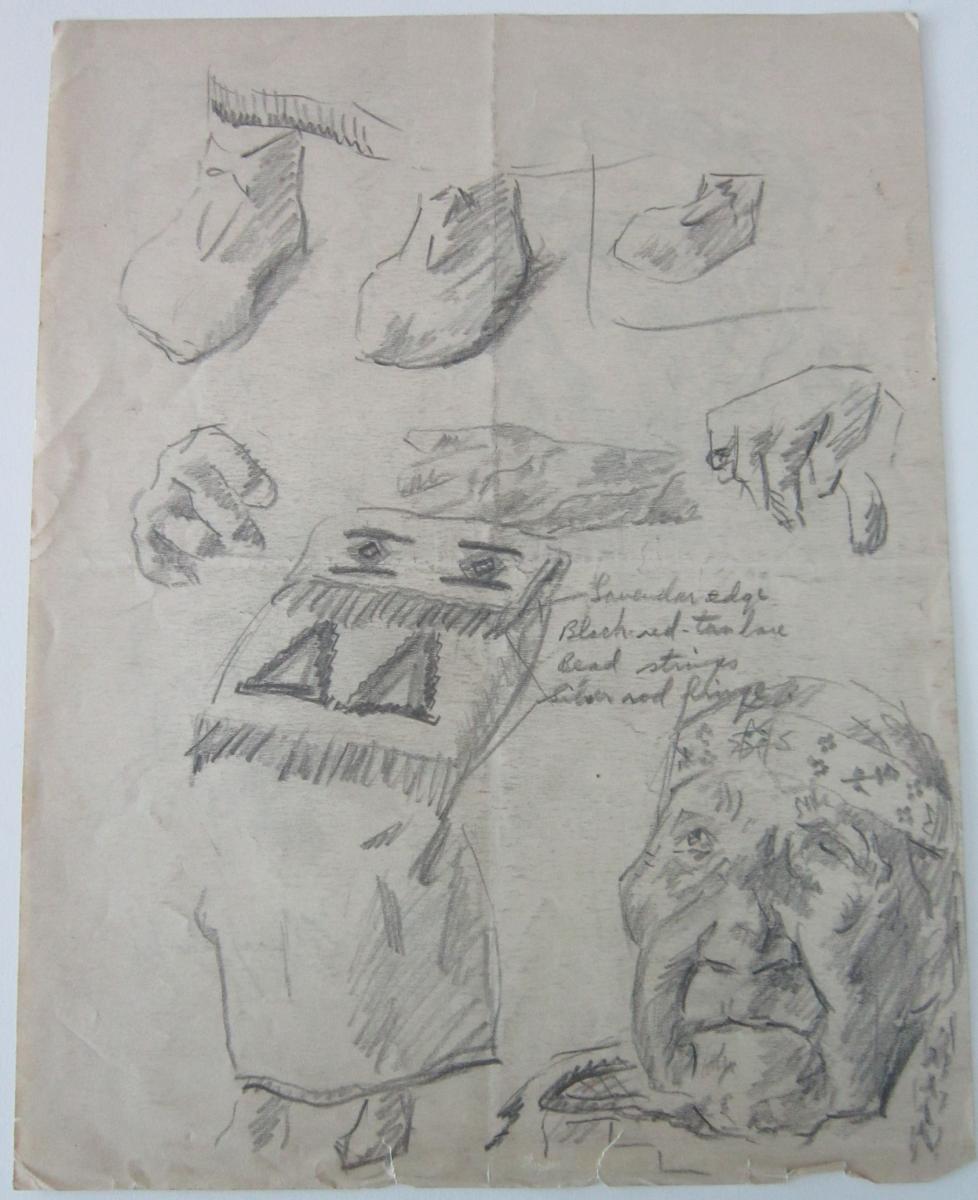

Clyfford Still, PDX-15, 1936, graphite on paper (top) and verso (above)
Lastly, there is a painting currently on exhibit that has an additional painting on the verso. The verso work even has it’s own PH number. PH-782 hangs in our introductory gallery and is a beautiful example of one of Clyfford Still’s early landscape paintings. Unbeknownst to our visitors, the verso is PH-452, a female nude that was painted ten years later in 1937.
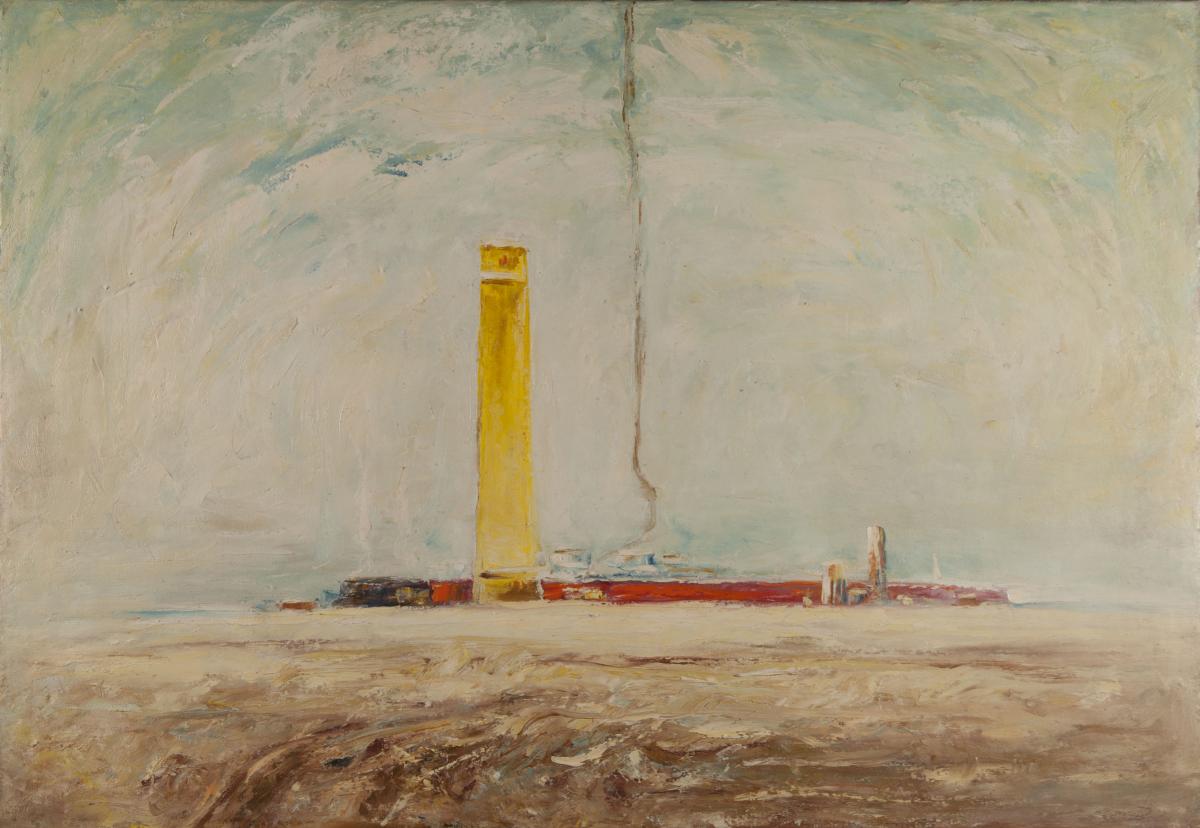

Clyfford Still, PH-782, 1927, oil on canvas; PH-452, 1937, oil on canvas, (above).
Although visitors cannot look at the backs of our artworks while they are on display, we plan to one day have our collection available digitally so patrons can explore all of the “hidden” treasures here.
All images © Clyfford Still Estate.
